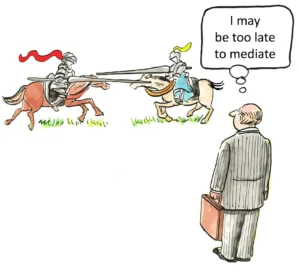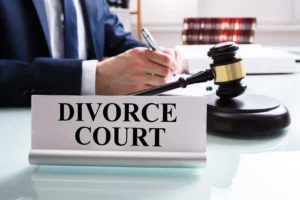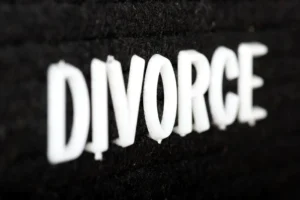How Do Tech Companies Navigate Legal Issues with AI Video Tools?
The rapid proliferation of AI video tools has created a complex legal landscape that technology companies must carefully navigate to avoid significant liability and regulatory penalties. As artificial intelligence continues to revolutionize content creation and manipulation, companies developing and deploying these technologies face unprecedented challenges at the intersection of innovation and legal compliance. The sophisticated capabilities of modern AI systems to generate, modify, and enhance video content raise profound questions about intellectual property rights, privacy protections, content authenticity, and regulatory compliance that demand thoughtful consideration from corporate legal departments and technology executives alike.
The legal issues surrounding AI-generated video extend far beyond traditional media law, encompassing emerging frameworks specifically designed to address the unique challenges posed by synthetic content. Technology companies must now contend with a rapidly evolving patchwork of state, federal, and international regulations that impose varying requirements for transparency, content labeling, and user protection. This regulatory fragmentation creates significant compliance burdens, particularly for companies operating across multiple jurisdictions with inconsistent legal standards.
The stakes for technology companies in this domain are exceptionally high. Beyond the immediate financial penalties for non-compliance, which can reach millions of dollars per violation under some regulatory regimes, companies face potential reputational damage, loss of consumer trust, and even existential threats to their business models if they fail to properly address the legal implications of their AI video technologies. This reality necessitates a comprehensive approach to legal risk management that balances innovation with responsible deployment and transparent communication about the capabilities and limitations of AI-powered video tools.
Intellectual Property Challenges in AI Video Generation
The intersection of AI copyright infringement and video generation presents one of the most significant legal challenges for technology companies. AI systems that create or modify video content typically rely on vast training datasets that may include copyrighted materials. This fundamental aspect of AI development raises complex questions about whether such use constitutes fair use or infringement under existing copyright frameworks.
Recent litigation has highlighted these tensions. In early 2024, a landmark case emerged when Canadian media companies filed a lawsuit against OpenAI, alleging unauthorized use of their content for AI training. Similarly, major record labels pursued legal action against Uncharted Labs for allegedly using their digital sound recordings to train the company’s Udio platform without permission. These cases illustrate the growing legal scrutiny of how AI systems are trained and the potential liability companies face for using copyrighted content without proper authorization.
The legal landscape becomes even more complex when considering the copyright status of AI-generated outputs. When an AI system creates a video that closely resembles existing copyrighted content, as alleged in the Alcon Entertainment, LLC v. Tesla, Inc. case where an AI-generated image allegedly mimicked content from the plaintiff’s film, companies deploying such technology may face direct infringement claims. This creates significant legal exposure for technology companies that provide tools allowing users to generate content that might inadvertently infringe on existing copyrighted works.
Transparency and Disclosure Requirements
A growing trend in AI video regulation involves mandatory disclosure and labeling requirements for synthetic content. These regulations aim to address concerns about misinformation and deception by ensuring that audiences can distinguish between authentic and AI-generated or manipulated media. Technology companies must increasingly implement technical solutions to comply with these emerging transparency mandates.
The European Union has taken a leading role in establishing such requirements through its AI Act, which took effect on August 1, 2024. Under this comprehensive framework, providers of AI systems generating synthetic audio, image, video, or text content must ensure their outputs are marked in a machine-readable format and detectable as artificially generated or manipulated. These technical solutions must be “effective, interoperable, robust and reliable” to the extent technically feasible. The full implementation of these provisions will become mandatory on August 2, 2026, giving companies a limited window to develop compliant systems.
In the United States, similar requirements are emerging at the state level. California’s AB3211, introduced in February 2024, would require generative AI providers to mark content with “provenance data” noting its synthetic nature, identifying the generative AI provider, and specifying which portions are synthetic. The bill would further mandate a public-facing tool allowing users to determine whether and how content was modified. Large online platforms would face additional obligations to label content when provenance data is available and provide annual transparency reports identifying deceptive synthetic media. Violations would result in a $25,000 fine per occurrence, creating significant financial incentives for compliance.
Deepfake Regulation and Political Content
The potential for AI video tools to create highly convincing “deepfakes” has prompted particularly stringent regulation of synthetic political content. These regulations aim to protect electoral integrity by preventing the use of AI-generated media to mislead voters about candidates or issues. Technology companies providing tools that could be used to create such content must implement safeguards to prevent misuse and ensure compliance with these specialized regulations.
Florida’s HB919, enacted in April 2024, exemplifies this trend. The law requires political advertisements created by generative AI to include a clear disclaimer stating: “Created in whole or in part with the use of generative artificial intelligence (AI).” This disclaimer must be printed clearly, be readable, and occupy at least 4 percent of the communication based on the media type. Failure to comply results in both civil and criminal penalties. The law specifically targets content depicting “a real person performing an action that did not actually occur” or content “created with intent to injure a candidate or to deceive regarding a ballot issue.”
At the federal level, bipartisan legislation introduced in March 2024 would require the identification and labeling of online images, videos, and audio generated using artificial intelligence. Key provisions would mandate AI developers to identify content created using their products with digital watermarks or metadata, while online platforms would be required to label such content to notify users. This approach would create a comprehensive framework for ensuring transparency about AI-generated political content across all major platforms.
Admissibility of AI-Enhanced Video in Legal Proceedings
Technology companies developing AI video enhancement tools face unique legal considerations regarding the admissibility of enhanced content in court proceedings. A significant precedent was established in April 2024 when a Washington state court ruled AI-enhanced video inadmissible in a criminal case. This decision in State of Washington v. Puloka highlights the legal system’s cautious approach to AI-modified evidence.
In this case, defense counsel sought to introduce AI-enhanced cell phone video through an expert witness. The expert had used at least one AI tool to enhance seven videos for presentation to the court. However, the prosecution’s expert, an experienced forensic video analyst, demonstrated that the AI tool added approximately sixteen times the number of original pixels to generate the enhanced version. He testified that the tool was unknown to the forensic video community, generated false image details, and was not acceptable in the forensic community because it not only enhanced the video but changed the meaning of portions of it.
The court ultimately ruled that the use of AI tools to enhance video recordings in criminal cases constitutes a novel technique requiring general acceptance in the relevant scientific community—in this case, the forensic video analysis community. Finding that the AI enhancement technology had not been peer-reviewed by that community, was not reproducible, and was not generally accepted, the court excluded the evidence. This ruling establishes an important precedent that technology companies must consider when marketing AI enhancement tools for legal or forensic purposes.
Data Privacy and Security Compliance
The operation of AI video tools typically involves processing substantial amounts of personal data, triggering obligations under various privacy regulations. Technology companies must implement robust data governance frameworks to ensure compliance with these requirements, which vary significantly across jurisdictions but generally mandate transparency, data minimization, and appropriate security measures.
China’s regulatory approach to data security presents particularly stringent requirements for technology companies operating in that market. The Data Security Law, which took effect in September 2021, established China’s first comprehensive data regulatory regime with extraterritorial reach extending to data processing activities conducted outside China that could potentially harm China’s national security or public interests. For companies collecting video data in China, these provisions create significant legal exposure, requiring careful evaluation of how global data practices might trigger Chinese jurisdiction.
In the United States, the California Consumer Privacy Act and similar state laws impose various requirements on companies processing personal data, including biometric information that might be captured or analyzed by AI video tools. These laws typically grant consumers rights to access, delete, and opt out of certain uses of their personal information, creating compliance obligations for technology companies that must be addressed through both technical and organizational measures.
Beyond these general privacy frameworks, sector-specific regulations may impose additional requirements. For example, AI video tools used in healthcare contexts must comply with HIPAA’s stringent protections for patient information, while those used in financial services may trigger obligations under various financial privacy regulations. Technology companies must carefully assess the applicable regulatory frameworks based on both the nature of their tools and the contexts in which they are deployed.
Liability for AI-Generated Content
Determining liability for harmful or illegal content created using AI video tools presents complex legal questions that technology companies must navigate. While Section 230 of the Communications Decency Act has traditionally shielded online platforms from liability for user-generated content, the unique characteristics of AI-generated content may challenge this protection in certain contexts.
When AI systems generate content that is defamatory, violates privacy rights, or infringes intellectual property, questions arise about who bears legal responsibility—the developer of the AI system, the user who prompted its creation, or the platform that hosts the resulting content. This uncertainty creates significant risk for technology companies, particularly as courts and legislators increasingly scrutinize the application of Section 230 to AI-generated content.
The risk of liability extends beyond traditional content-related claims to include potential product liability for harmful outputs. If an AI video tool generates content that causes demonstrable harm—such as a deepfake used to defame someone or manipulate markets—the company that developed the tool could potentially face claims that their product was defectively designed or that they failed to implement adequate safeguards against misuse. These product liability theories remain largely untested in courts but represent a significant area of potential exposure for technology companies.
To mitigate these risks, many technology companies implement content moderation systems that combine AI detection tools with human review. However, the scale and sophistication of modern AI systems make comprehensive content moderation extraordinarily challenging. Major platforms process billions of posts daily across numerous languages and cultural contexts, making complete human review impossible. Automated systems can help manage this volume but often struggle with context-dependent judgments, creating persistent gaps between platform policies and their practical implementation.
Algorithmic Transparency and Accountability
Increasing regulatory focus on algorithmic transparency creates additional compliance challenges for companies developing AI video technologies. These requirements aim to make the functioning of AI systems more understandable and accountable, particularly when they make decisions that could significantly impact individuals or society.
The European Union’s AI Act includes provisions requiring very large online platforms to assess and mitigate systemic risks from their algorithmic systems and provide researchers with access to platform data. In the United States, regulatory efforts have been more limited, though agencies like the Federal Trade Commission have used their existing authority to address deceptive or unfair algorithmic practices in specific cases.
Beyond formal regulation, market pressures increasingly demand greater transparency about how AI systems function. Users, business partners, and investors may be reluctant to engage with AI video tools that operate as “black boxes” with limited external visibility into their functioning or effects. This creates business incentives for technology companies to implement voluntary transparency measures, such as publishing documentation about how their systems work and their limitations.
The challenge for technology companies lies in balancing meaningful transparency with protection of proprietary information. Algorithms often represent significant intellectual property investments, creating tension between disclosure requirements and commercial interests. Companies must develop approaches that provide sufficient information to satisfy regulatory requirements and stakeholder expectations while preserving competitive advantages.
Implementing Technical Safeguards
To address the legal risks associated with AI video tools, technology companies increasingly implement technical safeguards designed to prevent misuse and ensure compliance with applicable regulations. These measures range from content authentication technologies to usage restrictions and monitoring systems.
Digital watermarking represents one of the most widely adopted technical safeguards. This approach embeds machine-readable information within content to indicate its AI-generated nature and origin. The EU AI Act specifically references watermarking as a potential method for complying with its transparency requirements, along with metadata identifications, cryptographic methods for proving provenance and authenticity, logging methods, and fingerprints.
Content authentication technologies go beyond simple watermarking to provide more comprehensive verification of media provenance. These systems may use blockchain or other cryptographic approaches to create tamper-evident records of content creation and modification. By implementing such technologies, companies can help users verify the authenticity and source of media, potentially reducing the risk of deception through AI-generated content.
Usage restrictions represent another important safeguard. Many AI video tools implement technical limitations on certain types of content generation, such as preventing the creation of deepfakes featuring public figures or restricting the generation of violent or sexually explicit content. These restrictions, often implemented through a combination of prompt filtering and output scanning, aim to prevent the most obvious misuses of the technology.
Compliance Programs and Risk Management
Effective navigation of the legal challenges associated with AI video tools requires comprehensive compliance programs tailored to the specific risks these technologies present. Technology companies must develop structured approaches to identifying, assessing, and mitigating legal risks throughout the product lifecycle.
Risk assessment represents the foundation of an effective compliance program. Before integrating AI video solutions, companies should evaluate potential risks, including impacts on privacy, security, and the possibility of generating harmful content. This assessment should consider both the intended uses of the technology and potential misuses, with particular attention to high-risk applications like political content or personal identification.
Documentation practices play a crucial role in demonstrating compliance and defending against potential claims. Companies should maintain comprehensive records of system development, testing, and deployment, including information about training data sources, model parameters, and validation procedures. This documentation can help demonstrate due diligence if legal challenges arise regarding the system’s outputs or impacts.
Regular auditing and testing of AI systems helps identify and address potential legal issues before they result in harm or regulatory violations. This may include adversarial testing to identify potential vulnerabilities, bias assessments to detect discriminatory outputs, and regular reviews of system performance against legal and ethical standards. By implementing robust testing protocols, companies can identify and remediate potential legal risks before they materialize.
International Regulatory Divergence
The global nature of technology businesses creates particular challenges in navigating the legal issues with AI video tools, as regulatory approaches vary significantly across jurisdictions. This international divergence requires companies to implement compliance strategies that can adapt to different legal requirements while maintaining operational efficiency.
The European Union has generally adopted more precautionary approaches to AI regulation, implementing comprehensive ex ante frameworks like the AI Act. This regulation establishes detailed requirements for AI systems based on their risk level, with specific provisions addressing synthetic media generation. Companies operating in the EU must comply with these requirements regardless of where they are headquartered, creating extraterritorial effects that influence global technology development.
In contrast, the United States has historically favored more permissive approaches, relying primarily on existing legal frameworks and targeted interventions for specific high-risk applications. However, this landscape is rapidly evolving, with numerous states introducing AI-specific legislation addressing various aspects of AI development and deployment. This creates a complex patchwork of requirements that companies must navigate when operating across multiple states.
China has implemented a distinctive regulatory approach that emphasizes data sovereignty and alignment with state priorities. The country’s Cyberspace Administration has implemented an AI Algorithm Filing system requiring companies to register both as entities and for individual products utilizing AI algorithms. This regulatory framework aims to increase transparency in AI technology use while preventing potential misuse, creating significant compliance obligations for companies operating in the Chinese market.
Future Trends in AI Video Regulation
As AI video tools continue to evolve, the legal landscape governing their development and use will likely undergo significant changes. Technology companies must monitor emerging regulatory trends to anticipate compliance requirements and adapt their products and practices accordingly.
One prominent trend involves increasing focus on mandatory content authentication. As deepfake technology becomes more sophisticated and accessible, lawmakers are likely to impose stricter requirements for verifying the authenticity of digital media. This may include mandates for digital watermarking, provenance tracking, or other technical measures to help users distinguish between authentic and synthetic content.
Another emerging trend involves the development of specialized regulatory frameworks for high-risk AI applications. Rather than applying uniform rules to all AI systems, regulators are increasingly adopting risk-based approaches that impose more stringent requirements on applications with greater potential for harm. For AI video tools, this may mean particularly strict regulation of technologies used in political advertising, evidence presentation, or biometric identification.
International harmonization efforts represent a potential countertrend to the current regulatory fragmentation. As countries around the world develop AI governance frameworks, there are increasing calls for coordination to establish common standards and interoperable compliance mechanisms. Organizations like the OECD and various standards bodies are working to develop principles and technical standards that could form the basis for more consistent international approaches to AI regulation.
Conclusion: Balancing Innovation and Compliance
Navigating the legal issues with AI video tools requires technology companies to balance innovation with responsible development and deployment. By implementing comprehensive compliance programs, technical safeguards, and transparent communication practices, companies can mitigate legal risks while continuing to advance the capabilities of AI video technologies.
The legal landscape governing AI video tools will continue to evolve as technology advances and regulatory frameworks mature. Companies that proactively address legal considerations throughout the product lifecycle will be better positioned to adapt to these changes and maintain compliance with emerging requirements. This approach not only reduces legal risk but also builds trust with users, partners, and regulators—a critical asset in the rapidly evolving AI ecosystem.
Ultimately, successful navigation of the legal challenges associated with AI video tools requires a commitment to responsible innovation that recognizes both the transformative potential of these technologies and their capacity for misuse. By embedding legal and ethical considerations into their development processes, technology companies can create AI video tools that deliver significant benefits while minimizing potential harms. This balanced approach represents not only sound legal risk management but also good business practice in an increasingly scrutinized technology sector.
Citations:
- Using AI Software to Enhance Commercial Videos
- Secure Video Compliance with AI Tools
- Challenges of AI-Generated Evidence in Law
- IP Issues in the Age of AI
- Tracker for AI Copyright Legal Cases
- U.S. Artists Win AI Copyright Case
- Best Practices for AI Compliance
- Legal and Ethical Complexities of AIGC
- Bill Requires Labeling of AI-Generated Media
- Fines for Non-Compliance with AI Act
- Five Key AI Legal Challenges Overview
- Top Tools for AI Compliance
- Legal Issues in Research with AI
- AI-Enhanced Video Ruled Inadmissible in Court
- State-by-State AI Legislation Snapshot
- EU AI Act Rules on Deepfakes
- Overlooked Legal Issues from AI Use
- Legal Issues with AI at UW Law
- Deloitte on Generative AI Legal Issues
- AI Copyright Law Battle at USC
- Understanding AI Copyright Challenges
- How AI Tools Help Compliance Officers
- Legal Challenges of AI-Generated Content
- Federal Court AI Copyright Decision
- AI and Intellectual Property Rights
- Guide to AI-Generated Video Technology
- AI-Generated Content and IP Rights
- When AI Violates Copyright Law
- Hidden Dangers of AI in HR
- Copyright Owners Win in AI Cases
- AI Tool in Criminal Cases Faces Challenges
- AI Legal Models Hallucination Study
- UC Davis Guide on AI Legal Issues
- FTC Cracks Down on Deceptive AI Claims
- Thomson Reuters Faces AI Copyright Lawsuit
- Running List of Key AI Lawsuits
- Vlex Legal Research Platform
- AI in 2024 Regulatory Developments
- YouTube Video on AI Legal Issues
- Deepfake Defense Evidentiary Challenges
- Guide to AI Governance and Compliance
- Legal Playbook for AI in HR
- MIT Sloan on Generative AI Legal Issues
- Media Law Experts on AI Tool Risks
- YouTube Video on AI Legal Practices
- Bloomberg Law on AI in Legal Practice
- Forbes on Mitigating Legal Risks with AI
- Laws Surrounding AI-Generated Images
- AI Legislation Trends in 2025
- Global Regulatory Tracker for AI in U.S.
- AI Legislation in 2024 Overview
- State AI Regulation in 2024
- Emerging Trends in AI Legislation
- Senate Bill 2691 on AI Regulation
- Prosecuting Illegal Video Content with AI
- EU Regulatory Framework for AI
- EU AI Act First Regulation Overview
- Proposed U.S. State AI Legislation
- Is AI-Generated Content Copyrighted
- EU AI Act Becomes Law
- Tech Companies Improve AI Standards
- Microsoft Names Developers Behind Illicit AI
- Artists Win Copyright Case Against AI
- Detecting Deepfakes in Legal Cases
- AI in Regulatory Compliance for Content
- Forbes on AI Training Data Fair Use
- Copyright Issues with AI-Generated Media
- YouTube Approach to Responsible AI Innovation
- Surfer SEO on AI Copyright Issues
- Salesforce on Generative AI Regulations


















